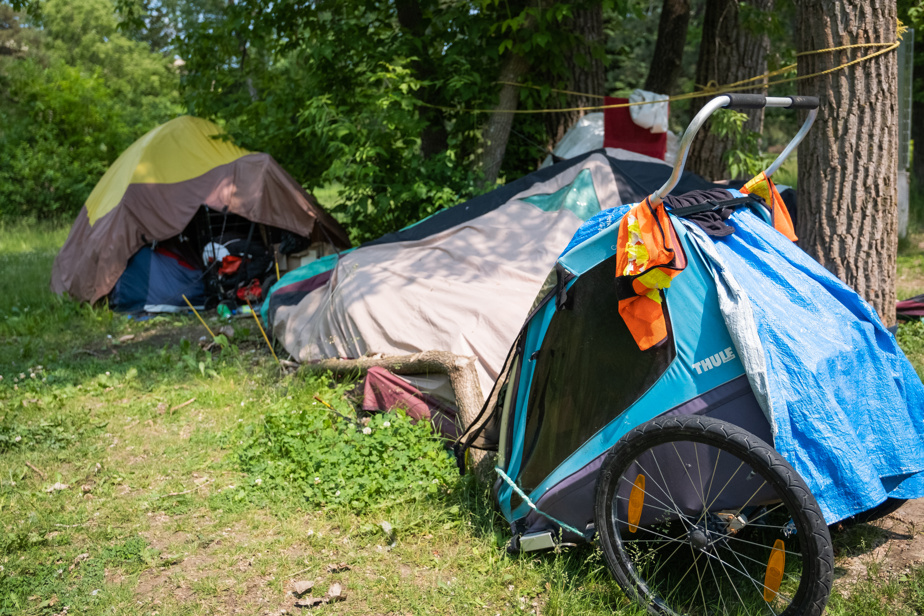Why are there more and more homeless people in residential neighborhoods, far from the large shelters in downtown Montreal?
If we look globally, according to the 2022 count, there is a 33% increase in visible homelessness in Montreal. We also see impoverishment in several sectors of the city; in several districts. There is a lack of housing, rising rents, rising costs of living. People are becoming impoverished to the point of becoming homeless. They do not necessarily intend to leave where they live and go to the city center.

PHOTO OLIVIER JEAN, THE PRESS
Serge Lareault, commissioner for people experiencing homelessness at the City of Montreal
Historically, homelessness was downtown; large organizations were created there. But the city center is special; it’s active life. It is also the place where a lot of drug sales take place. Not all street people want to leave their area of the city and go to these resources. This is why we need to talk more and more about territorial equity, that is to say having services almost everywhere on the island of Montreal to accommodate these people. . We must be able to offer services where people are.
What tensions could this create?
With an increase in homelessness, an increase in mental health issues, the opioid crisis – increasingly strong drugs circulating – this is destabilizing the population. The latter experiences a feeling of insecurity; discomfort too. People are shocked. They say to themselves: “let’s see, the State has to take care of people”, so that creates issues of cohabitation. Most people on the street are not dangerous people. These are people who are vulnerable, of course, who have difficulties, but who can behave in ways that worry others. We must encourage cohabitation, reassure everyone and ensure that services [aux sans-abri] coexist well with other local services such as shops.
It is important in any case to make room for these people. If there are very close residences, daycare centers, schools, it is certain that significant surveillance must be provided. We must ensure that people live together well. We must also ensure that we are capable of caring for people in crisis situations so that they comply with the practices that we must all have together; even if it’s close, even if it’s not always easy. Then, these are organizations that are recent [dans les secteurs résidentiels]. Often, over time, there is an improvement in cohabitation.
We must combat both the risks of incivility, but also the feeling of fear which is not always justified. It’s not simple. This is why we created a team like EMMIS – the Mobile Mediation and Social Intervention Team – to help everyone, both vulnerable people and residents, to know each other, understand each other and to be able to live together.
Is this phenomenon unique to Montreal?
The phenomenon of rough sleepers – which can be translated as street sleepers – and encampments, this is something that has existed for more than 20 years in the American West and in Western Canada. With the increase in homelessness and poverty, we see it more and more in Montreal. To combat this great insecurity which leads people to want to sleep outside, we must ensure that there is enough emergency accommodation, that there is housing. We are experiencing a housing crisis. There has been enough talk about it in the media. We must work on all these fronts to be able to offer people options other than sleeping on the streets. During the pandemic, we doubled the number of emergency accommodation beds. But at the same time, shelters should not be a permanent place; we need to get out of the shelters. This is why cities are begging higher levels of government to increase funding and accelerate the construction of social housing. This is what, basically, creates this whole crisis.
Montreal seems to have made a 180-degree turn on the camps for people experiencing homelessness. In January, in an interview at The Press, you told us that they had to be dismantled for reasons of security and human dignity. Today, you are talking about the idea of creating temporary villages of tiny houses while social housing is built. What explains this change of direction?
In fact, we are looking for solutions. What is favored in Montreal is having a solid built environment, then densification. It is certain that what we are targeting are social housing buildings. On the other hand, we know all the slump that there is currently regarding the development of programs. It’s very slow at the moment, building social housing. Are there different opportunities?
We see it: to speed up the provision of accommodation, several cities will create trailer parks, sometimes tiny houses. There are others, these are temporary units, shelters, individual accommodation in parks, on land. We see several models in North American cities. We are at the research stage. It is not comparable to camps, makeshift shelters made with wooden planks or tents that are not equipped for winter.
In Windsor, Ontario, or Halifax, Nova Scotia, we have installed modular units that allow people to be housed while waiting to build larger social housing complexes. We look at this concept, which is very particular. We also started an ad hoc committee on the needs of people who do not have access to emergency accommodation or housing. We’re talking about campers, but also people who sleep in business entrances. Can this type of modular unit project help them? With the increase in homelessness, we must increase our services. In this committee, there are experts from the community sector, the City and the health sector who will look at what are the best practices elsewhere in the world and what we can do in Montreal to help these isolated, disaffiliated people. of the system, who sleep on the street.
*The speaker’s remarks have been abbreviated for brevity.

PHOTO PATRICK SANFAÇON, THE PRESS
Camp on Notre-Dame Street, in Hochelaga-Maisonneuve
